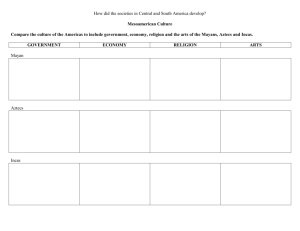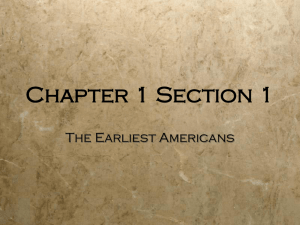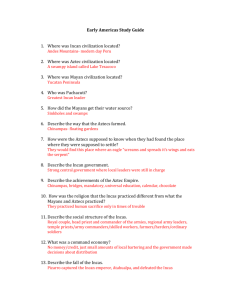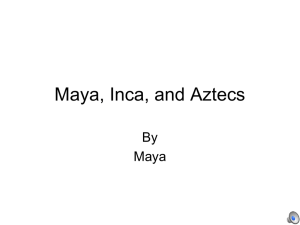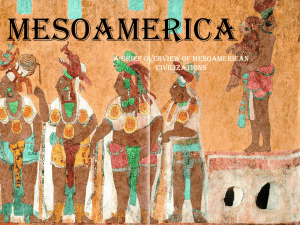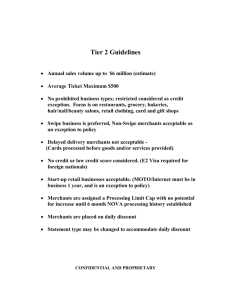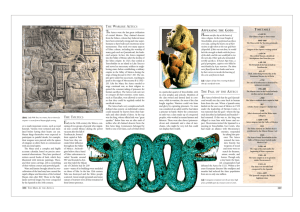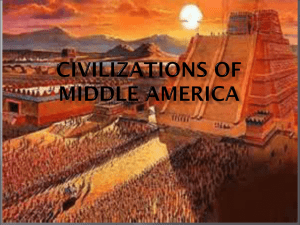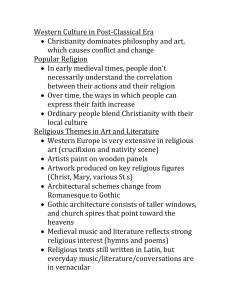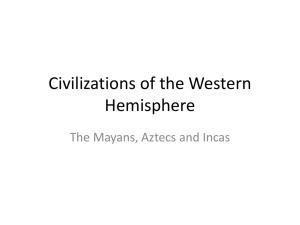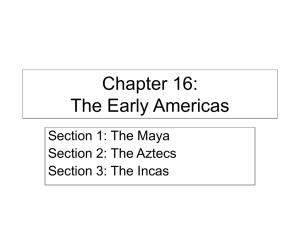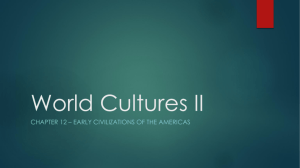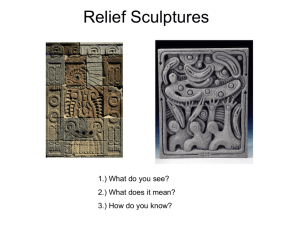AP WORLD HISTORY Change and Continuity Analysis Chart Unit
advertisement
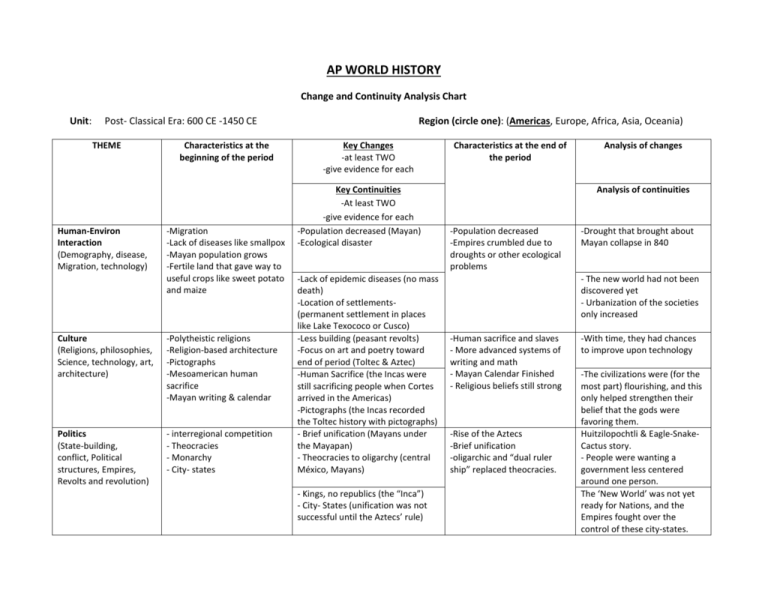
AP WORLD HISTORY Change and Continuity Analysis Chart Unit: Post- Classical Era: 600 CE -1450 CE THEME Human-Environ Interaction (Demography, disease, Migration, technology) Characteristics at the beginning of the period -Migration -Lack of diseases like smallpox -Mayan population grows -Fertile land that gave way to useful crops like sweet potato and maize Culture (Religions, philosophies, Science, technology, art, architecture) -Polytheistic religions -Religion-based architecture -Pictographs -Mesoamerican human sacrifice -Mayan writing & calendar Politics (State-building, conflict, Political structures, Empires, Revolts and revolution) - interregional competition - Theocracies - Monarchy - City- states Region (circle one): (Americas, Europe, Africa, Asia, Oceania) Key Changes -at least TWO -give evidence for each Key Continuities -At least TWO -give evidence for each -Population decreased (Mayan) -Ecological disaster -Lack of epidemic diseases (no mass death) -Location of settlements(permanent settlement in places like Lake Texococo or Cusco) -Less building (peasant revolts) -Focus on art and poetry toward end of period (Toltec & Aztec) -Human Sacrifice (the Incas were still sacrificing people when Cortes arrived in the Americas) -Pictographs (the Incas recorded the Toltec history with pictographs) - Brief unification (Mayans under the Mayapan) - Theocracies to oligarchy (central México, Mayans) - Kings, no republics (the “Inca”) - City- States (unification was not successful until the Aztecs’ rule) Characteristics at the end of the period Analysis of changes Analysis of continuities -Population decreased -Empires crumbled due to droughts or other ecological problems -Drought that brought about Mayan collapse in 840 - The new world had not been discovered yet - Urbanization of the societies only increased -Human sacrifice and slaves - More advanced systems of writing and math - Mayan Calendar Finished - Religious beliefs still strong -Rise of the Aztecs -Brief unification -oligarchic and “dual ruler ship” replaced theocracies. -With time, they had chances to improve upon technology -The civilizations were (for the most part) flourishing, and this only helped strengthen their belief that the gods were favoring them. Huitzilopochtli & Eagle-SnakeCactus story. - People were wanting a government less centered around one person. The ‘New World’ was not yet ready for Nations, and the Empires fought over the control of these city-states. Economics (Agric, trade, commerce, labors systems, industrialization, capitalism, socialism) - Development of markets - Trade-spread religion - Rich political/merchant class - Irrigation System - Markets developed - Currency Social (Gender roles/ relations, family, racial & ethnic constructions, social and economic classes) - Equal rights for everyone - Nobles and peasants - Nobility was not hereditary, so some social mobility was available - Others: warriors and farmers -Slaves were lowest, but most important (Aztecs) - Women had a domestic and political role - Nobility starts to move towards becoming hereditary - Warriors ‘class’ becomes mostly artisans and merchants -Trade Routes (Incan trade routes) -Rich merchant class’ (developed because of trade routes - Farmers - Traveling merchants - System of ‘capitalist’ economy, with nobles owning land and others renting. - Currency systems with beans or ‘taxes’ paid in labor (Incas) - Nobility is hereditary - Leaders are like gods; meant for the position and especially in favor with the gods. - Rights less equally distributed -Merchant class becomes upper middle class. - Traveling merchants important for luxury lifestyles - Once a system of currency was established, the economy is more free. - They were not considered to be “capitalist” because land and labor were not commodities for sale. - The rich want to maintain power among themselves - Less demand for warriors; everything has can be taken over has been conquered. - Demand for food is still strong since population is growing. - Traveling merchants must bring luxury goods only available far away (daily fish)
